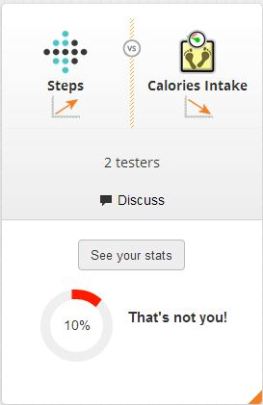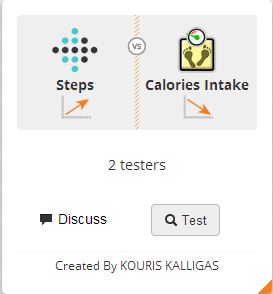Coming out of the gym after a massive two hour cardio and toning session, I felt tired but very happy.
“I’ve done it’ I thought “I’m getting my fitness back”.
Ten months earlier I had managed to quit smoking.
I went from one pack a day to two cigarettes a day and within weeks I was condescendingly wafting away the smoke of others. Had I been an addict? I don’t think so, but it was definitely part of my daily routine and admittedly I enjoyed it.
That coffee with a morning cigarette getting ready to start the day, the first inhale when you’ve finished work and can finally relax, and of course there’s nothing better than a few drinks on the weekend sharing the pros and cons of life with a cigarette sitting comfortably in hand. Originally I smoked when I was stressed but it became this daily part of life I barely noticed.
Time to quit
With time however I had began to feel the effects. My skin felt dry, and my hair began to lose its shine. Did I detect a few more wrinkles on my upper lip and did my eye bags look darker? I started to feel like I couldn’t smell anything, be able to taste the wine I liked so much, or walk up a flight a stairs without feeling breathless. The moment I became stressed, frustrated, sad or depressed I immediately turned to lighting up another cigarette, and another, until my throat felt dry and I had a persistent cough. It was time to quit.
Positive momentum
The greatest motivator was doing sport. There is nothing worse than running on a treadmill and feeling like your lungs are about to collapse. When I was smoking I chose swimming as my preferred exercise, as it was the only sport that didn’t make me feel like I was gasping for air, unless I was underwater of course. The more sport I did, the less I smoked, and the less I smoked the more energy I had. A great surge of positive momentum began to take over my life, and with all this newfound energy I was able to accomplish more and felt happier. Sport was reducing my stress levels and helping me to reduce the amount I smoked.
Outcast
Certain other things began to change too. It wasn’t until I had stopped smoking altogether I realised I was the only one sitting at the dinner table, whereas the rest of my friends socialised whilst puffing away outside. I felt like the outcast, and my fingers itched slightly with the desire to wrap themselves around the stub of a cigarette.
In Europe it is socially acceptable to smoke, and most people do without feeling any judgment. Bloomberg News reported that Europeans are the highest consumers of cigarettes (and additionally alcohol) from a study made by the World Health Organisation.
Cultural or health factor?
In Australia, my home of origin, it is frowned upon and brought up consciously as a subject of public health. In Australia the smoker would be the one outside, and the rest all still sitting at the dinner table.
Which makes me wonder: is smoking a cultural or a health issue? I know many people who both smoke and participate in all sorts of sports and activities and it does not seem to affect their performance ability.
According to the New York Times, the number of adults who smoke has dropped to a record low of 18.9 % in the US last year. Health however may not have something do with it. The global cost increase of cigarettes brands, health risk packaging and smoking bans have made it an obstacle for the consumer to incorporate it into their everyday life and budget. Fewer people smoke because it is more expensive, and because it is becoming less socially acceptable to be a smoker.
Go electronic?
I don’t think anyone smokes because they think it’s healthy for them, but what if you want to be healthier?
There are many alternatives, and one increasing trend is electronic cigarettes. Throughout Europe there is a building trend for stores supplying a range of styles. The battery operated E-cigarette contains liquid nicotine that is heated up by an atomizer. This creates a vapour cloud that is inhaled and exhaled by the user, creating the illusion that they are smoking an everyday cigarette. Thus unlike conventional cigarettes the electronic cigarette does not require the same dangerous mix of chemicals to keep the tobacco and paper burning.
Some specialists say although it does mean that electronic cigarettes are safer, they contain similar carcinogenic chemicals that cause various forms of cancer. They may be ‘healthier’ than standard cigarettes but they are not ‘healthy’, even if they are Jack Nicholson’s new brand of choice.
So why do we smoke?
Why would we stop?
Why did we start in the first place?
Can we smoke and still expect to be healthy?
This generally accepted social norm that helps us with stress, which can equally connect or isolate us from others, is undeniably detrimental to our personal health.
Stress relief
We know that cigarettes are full of nasty chemicals, and obviously nicotine is what gets everyone hooked, but I have a different theory:
the act of smoking is merely breathing in and out. Think of every time you’re stressed and you let out a gust of frustrated breath, you feel just a little better after. Smoking is a greater manifestation of that, where you perform controlled breathing, the same as you might in a yoga class. This enhances and relaxes you, allowing you to clear your mind so to speak; why else would we need to get some fresh air from time to time, when maybe all we mean is that we are just going for a cigarette.
When I left the gym feeling oh so fantastic and proud of myself for getting back into doing sport, I also saw my personal trainer smoking on the street. My western sensibilities were shocked, but my European attitude didn’t mind at all. Whether it is a health issue or a cultural issue, one thing is certain. Smoking shall always remain a hot topic.
By Kalpana Barnao
TOP FIVE QUIT TIPS
- Don’t smoke in the morning, it gives your body a chance to get more oxygen and thus give you more energy.
- Collect your empty packets. See how many you have at the end of the week to see how much you actually smoke.
- Eat carrots! The crunchiness of the carrot helps relieve tension in your facial muscles and your jaw caused by stress.
- Do meditative exercise like swimming or yoga. Sports that rely on rhythmic breathing can encourage you to be more aware of your fitness and reduce stress levels.
- BE DISCIPLINED! Find more healthier ways to de-stress or cope with situations. The confidence you develop will help you to not rely on cigarettes and build greater self-esteem.
QUIT SMOKING APPS
0.000000
0.000000






